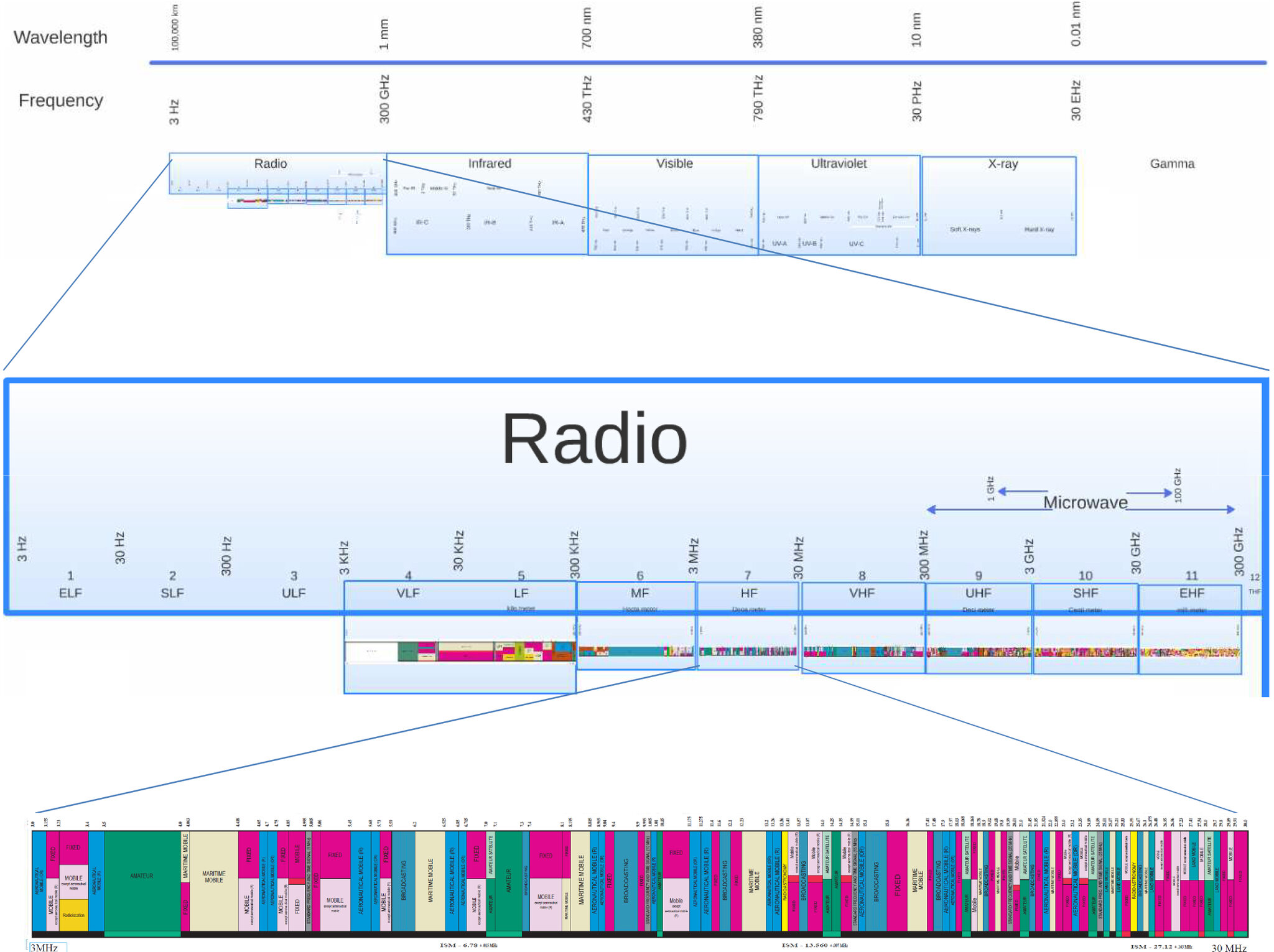
The problem with RF
We live in a world awash in waves. Millions of different wavelengths are used for communication or transmission of some sort, and it’s hard to visualize the sheer volume of electromagnetic action going on all around us, all the time.
If you look at the chart above, you’ll notice that the audible spectrum — 20Hz to 20KHz — lies stretched across three classified bands: Super Low Frequency, Ultra Low Frequency and Very Low Frequency. However, the transition to Very Low Frequency occurs in a pivotal area in the human hearing mechanism, and everything above that transition behaves differently from the lower frequencies below it.
We know this — high audible frequency waves are directional, and low audible waves become omnidirectional.
In fact, we know a lot about the audible spectrum, and we know how to design electronics to maximize linearity where we can hear it.
But how do our amplifiers, preamplifiers, DACs and speakers react to the millions of invisible frequencies around us? Well, if designed correctly their circuits will be encased in a metal enclosure, and that enclosure will be connected to the earth ground of its power cable, effectively sending any RF down the path of least resistance, which hopefully is through the ground line.
When all connected boxes of a hifi stereo system are connected this way, the earth ground must be able to shunt every RF wave received by the system, and this is not an easy task. The higher a frequency an electrical AC wave is, the more it moves toward the outside of its conductor — this is known as the skin effect.
Many hifi power cable ground conductors are simply not capable of being the path of least resistance, and their RF shielding schemes — foil wraps, braided metal sleeves and ferrite beads — throw the baby out with the bath water, ruining the potential sound of the system.
